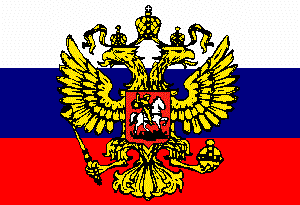
![]()
![]()
![]()

![]()
![]()
![]()
|
Bishop John, in the world Nicholas Bulin, became an officer in the
Russian army who was wounded on the front in the First World War. He was consecrated Bishop of Navra and Pechersk, in Estonia, on April 25 / May 8, 1926, and was a defender of the Russian Orthodox Church in Estonia from Estonization. In 1933, according to one source, he was briefly Bishop of Saavremaa. He was a strictly Orthodox bishop of the "Karlovtsy" (ROCA) orientation. Certain suspicious people who were secret agents of the GPU illegally crossed the border from Russia into Estonia and, at the request of the bishop's sister (who had fled with the Bolsheviks in 1918 and who had been converted to Bolshevism through her acquaintance with a certain well-known commissar), tried to persuade him to join the Soviets. They assured him that he would suffer nothing, and only asked that he act as an informer. These approaches became known to the Estonian police, and the bishop was arrested. While he was in prison he made a declaration through his lawyer that he not only had had nothing to do with Bolshevism, but that he was actively hostile to it. After a long investigation the bishop was cleared and released from prison. However, the Estonians removed from his post as superior of the Pskov Caves monastery and exiled him from the country on the charge of russifying his diocese. But they had to do this secretly because some Russian peasants, having heard that their bishop was to be deported, gathered 200-300 carts around the monastery, declaring that they would not voluntarily give up their archpastor. Vladyka spent some time in Belgrade and Bulgaria, and served with hierarchs of the Russian Church Abroad in Jerusalem. However, he eventually returned to Estonia. When, in 1940, the Bolsheviks again occupied Estonia, Bishop John was one of the first to be arrested. At first they were polite to him during the interrogations. The investigator assured him that, thanks to his sister, there was nothing for him to be afraid of, and that only one thing was required of him - that he cooperate with the GPU in unmasking "enemies of the people". Although the 70-year-old man did not assent to this proposal, they continued to be polite to him, even letting him know that he would soon be released. During one night interrogation, after the same proposal had been made to the bishop and he again kept silent, the interrogator jumped up, seized a folder of papers from his desk, struck the bishop on the face and bawled: "Well, look, you accursed dog. Do you recognise these papers? They fell into our hands even before your arrest..." And he hurled the folder on the floor. Then he pulled some yellowing pages out of the folder and threw them onto the table. It was a declaration signed by the bishop in 1918, on the basis of which the Estonians had released him. There were several more lengthy night interrogations, in which he was cruelly beaten. A fellow-prisoner wrote: "The next night two warders came for the old man and ordered him to get ready with this things. The old man was not frightened. He got up calmly, without hurrying, to get ready. Having packed his things, he went round the bunks and only when he had shaken the hands of all the prisoners who were lying there did he take his small bundle and head for the door, where he stopped and cast a last glance full of pity over those lying on the bunks. He left with his head high, as if the hatred of men could not touch him. The iron door slammed after him. I noticed that many of the prisoners stealthily brushed away their tears. According to one source, Bishop John together with Schema-Bishop Macarius (Vasilyev) tried to make contact with the ROCA Metropolitan Seraphim of Berlin, but failed. Two weeks before the beginning of the war with Germany in June, 1941, He was taken with many other old emigres to the Soviet Union and perished without trace. According to one source, he was shot in the same year near Gatchina. (Sources: Protopresbyter Michael Polsky, Novye Mucheniki Rossijskiye, Jordanville, 1949-57, part 2, pp. 286-287; M.E. Gubonin, Akty Svyateishago Patriarkha Tikhona, Moscow: St. Tikhon's Theological Institute, 1994, pp. 974, 983; Oleg Vladimirov, "Svidetel'stvo o Episkope Pecherskom", Pravoslavnaya Rus', N 1 (1574), January 1/14, 1997, pp. 4-6; M.V. Shkvarovsky, Iosiflyanstvo, St. Petersburg: Memorial, 1999, p. 187)
|
 |
 |
 |
 |
 |
 |
 |
 |